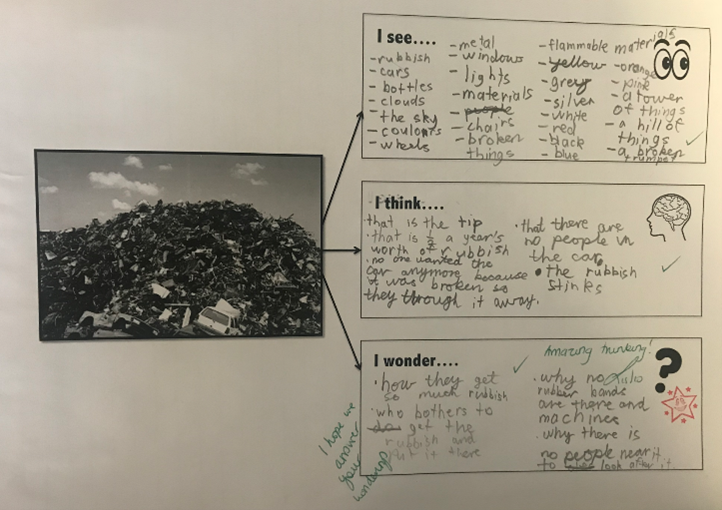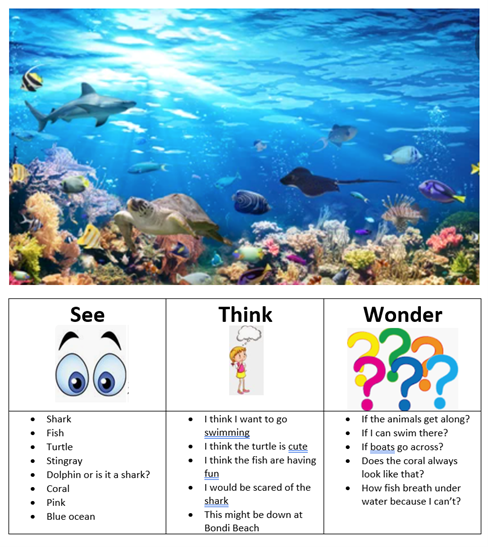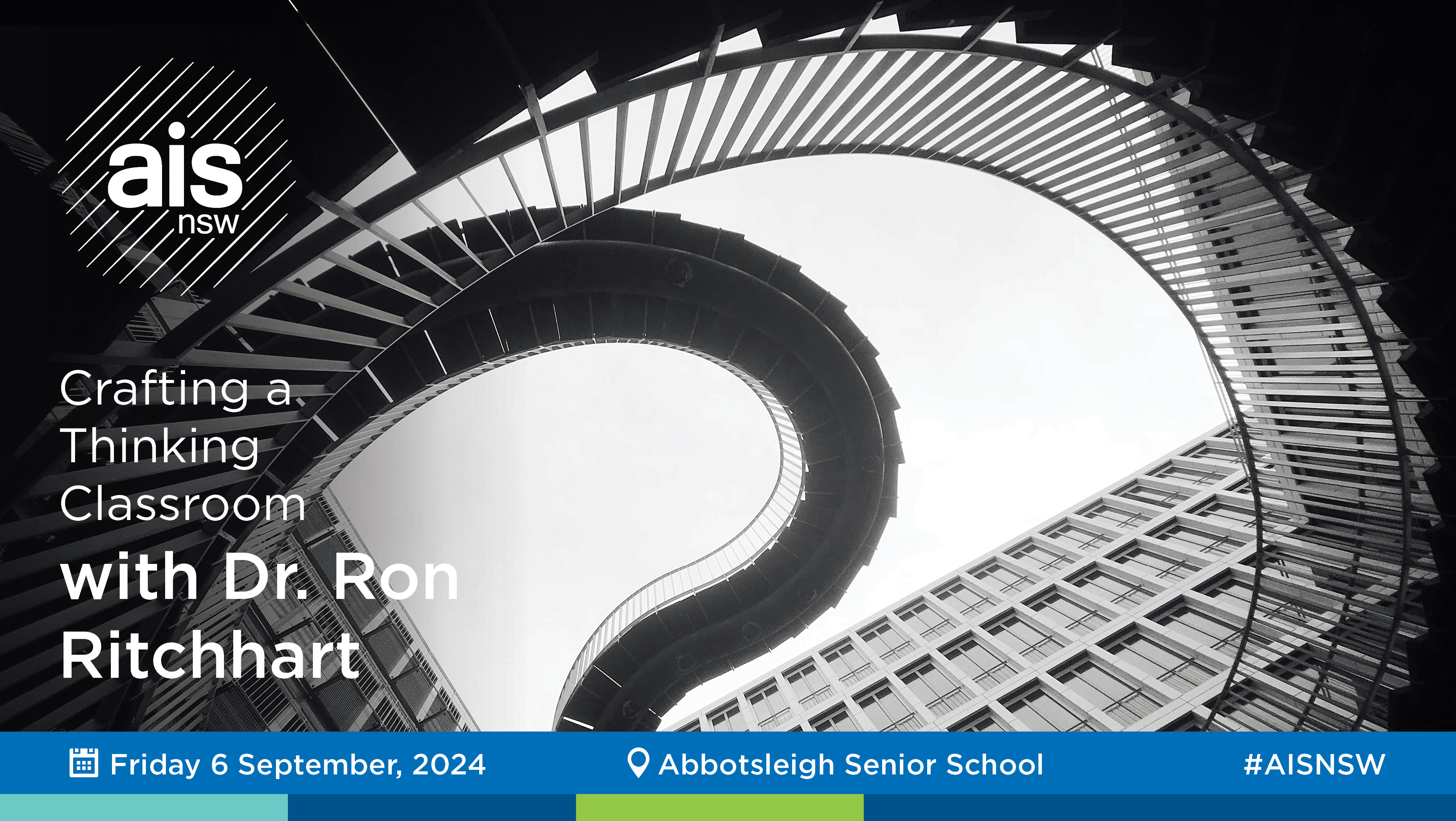This is the first in a series of articles where we’re going to look at how you can use specific thinking routines in your classroom to teach the outcomes and content of the P-6 Syllabus.
We all know developing our students’ ability to think critically and creatively is vital for their future. The science of learning also confirms thinking is inextricably linked with learning. In fact, Professor David Perkins (2001) from Harvard University says true learning (as opposed to memorisation) is a product of thinking.
If we want our students to understand new ideas deeply, we have to provide opportunities for them to think.
However, we also know two essential things about thinking:
- Students need to be explicitly taught how to think in a variety of ways and for a variety of purposes.
- Students need to think about something. They need the knowledge to provide the fodder for their thinking.
So, how do we teach students to think in P-6?
Using Harvard Project Zero's Thinking Routines is a great place to start.
These routines (as the name suggests) are designed to be used regularly in classrooms to encourage different types of thinking. The more they are used, the more students’ thinking becomes a routine habit.
Over the past two 20 years of so, Project Zero has developed a wide range of routines for different thinking purposes. You can find them all in the Thinking Routines Toolbox.
At AISNSW, we are keen to support you in building your own toolbox of routines for use in your classroom and giving you practical examples of what this might look like.
In this, and upcoming editions of Education News, we're going to look at specific routines, discussing how you can use them to teach the outcomes and content of the P-6 Syllabus.
In this article, we’re going to unpack one routine for introducing and exploring ideas: See Think Wonder.
See, Think, Wonder
The "See, Think, Wonder" routine is a powerful tool for fostering inquiry and critical thinking in the classroom. Through this routine, students are encouraged to observe interpretations, and question what they see. As a result, this process not only enhances observational skills, but also promotes deeper engagement with the subject matter.

Launching a Year 4 Sustainability Unit with 'See, Think, Wonder', exploring the complexities of waste management and its impact on our environment
In the classroom, teachers introduce the routine by presenting a stimulating visual stimulus such as a photograph, artwork, or short video clip. Students are prompted to carefully observe the stimulus and jot down or discuss their initial observations and interpretations. They then share their thoughts with peers in small groups or as a whole class, fostering discussion and collaborative sense-making. Finally, students are encouraged to generate questions or wonderings based on what they have seen and discussed, further driving inquiry and curiosity.
Throughout this process, teachers ask authentic questions (Ritchhart, 2011), allowing students to witness teachers as learners, modelling the art of thinking.
How can I use this thinking routine?
NSW English K-10 Syllabus
ENE-OLC-01 - Communicates effectively by using interpersonal conventions and language with familiar peers and adults
Contribute to group conversations.
- Once effectively modelled and practiced, teachers can observe student interactions in partner and group situations. Checklists are a fabulous tool to record observations.
Use oral language to reason when speaking.
- The ‘think’ component of the routine enables teachers to consider students reasoning skills, as effective responses require them to draw connections and conclusions, whilst unpacking observations. Teachers could scribe student responses or students could record their responses utilising digital technologies.
EN1-OLC-01 - Communicates effectively by using interpersonal conventions and language to extend and elaborate ideas for social and learning interactions.
Respond to information by asking relevant questions to extend their own and others' knowledge.
- The ‘Wonder’ phase of the routine allows teachers to analyse student question composition, determining their relevance and impact. Partner work may also allow teachers to identify students’ ability to ask and respond to questions of others. Teacher modelling of posing questions is integral for this to be successful.

Using the 'See, Think, Wonder' framework with preparatory students based on the above image can be an engaging way to stimulate discussions
Link or compare ideas when interacting
- In pairs or small groups, students can share results, comparing their ideas and discussing ways in which they are different.
EN2-OLC-01 - Communicates with familiar audiences for social and learning purposes, by interacting, understanding and presenting.
Contribute to discussions with peers and stay on topic, build on others' ideas and express own ideas.
- Introduce the practice of ‘Yarning circles’ as a form of active communication. Yarning circles are an Aboriginal practice of sharing and connecting, proving a safe space to be heard and respond to others. By discussing the ‘think’ phase of the routine, students can draw connections with peers, actively listening to build links.
Pose and respond to specific questions to clarify or follow up on information.
- The ‘wonder’ phase of the routine allows teachers to engage with students' ability to pose relevant questions linking to the subject. Additionally, teachers can ask students to explain specific wonderings, as they elaborate and clarify their intention.
EN3-OLC-01 - Communicates to wide audiences with social and cultural awareness, by interacting and presenting, and by analysing and evaluating for understanding.
Initiate and contribute to sustained discussions, through questioning, building on and evaluating shared information.
- Through student observations, teachers can analyse students’ ability to question, building on and evaluating what they have heard.
Apply active listening strategies by retelling or repeating what another person has expressed and by building on what has been said.
- In pairs, students can explain their responses to the different phases of the routine, finding connections to build on to ideas.
Crafting a Thinking Classroom with Dr Ron Ritchhart
Join us for an exclusive event featuring insights from renowned educator Dr. Ron Ritchhart on Friday, September 6th. Gain valuable insights into how thinking routines can enhance classroom learning and acquire practical strategies for stimulating meaningful student discussions. Dr. Ron Ritchhart will share his expertise at Abbotsleigh Senior School, showcasing thinking routines in action. For more information and to register, click on link below.
Crafting a Thinking Classroom with Dr Ron Ritchhart
